Sunshine Peacock - Aulonocara baenschi
Scientific name: Aulonocara baenschi
Common name: Sunshine Peacock
Family: Cichlidae
Usual size in fish tanks: 8 - 10 cm (3.15 - 3.94 inch)
014
Recommended pH range: 7 - 8.5
Recommended water hardness: 10 - 18°N (178.57 - 321.43ppm)
0°C 32°F30°C 86°F
Recommended temperature range: 22 - 26 °C (71.6 - 78.8°F)
The way how these fish reproduce: Spawning
Where the species comes from: Africa
Temperament to its own species: aggressive/territorial
Temperament toward other fish species: peaceful
Usual place in the tank: Middle levels
Sunshine Peacock Overview
The Sunshine Peacock (Aulonocara baenschi) is a vibrant and eye-catching cichlid species native to the rocky shores of Lake Malawi, Africa. Known for their stunning coloration and relatively peaceful nature, they are a popular choice for community aquariums. In captivity, these cichlids typically grow to a size of 8 to 10 cm (3.15 to 3.94 inches) and occupy the middle levels of the tank. While they are generally peaceful towards other species, they can exhibit territorial behavior towards their own kind, especially during breeding periods.
Tank Requirements
Sunshine Peacocks thrive in a well-structured aquarium that mimics their natural habitat. A tank size of at least 150 liters (40 gallons) is recommended to provide ample swimming space and accommodate their territorial nature. Include rock formations, caves, and crevices to offer hiding spots and create distinct territories. These structures will help reduce aggression and stress within the tank.
Maintain water temperatures between 22-26°C (71.6-78.8°F) with a pH range of 7 to 8.5 to replicate their natural environment. The water hardness should be between 10 to 18°N (178.57 - 321.43 ppm). An efficient filtration system is crucial for maintaining water quality, as cichlids are known to produce significant waste. Regular water changes (20% weekly) are essential to keep the water parameters stable.
Food and Feeding
Sunshine Peacocks are omnivorous, with a preference for protein-rich foods. They will readily accept a varied diet, including live foods like brine shrimp and bloodworms, as well as high-quality flakes or pellets formulated for cichlids. To maintain their vibrant coloration and health, supplement their diet with occasional treats of frozen foods. Feeding them 2-3 times daily in small amounts helps prevent overfeeding and maintains water quality.
Sexing
Male Sunshine Peacocks are typically larger and display more vivid coloration than females, especially during breeding periods. Males often exhibit bright yellow and blue hues, while females tend to be smaller and have more subdued coloration, usually a silvery or brownish tone.
Breeding
Sunshine Peacocks are maternal mouthbrooders, a common breeding behavior among cichlids from Lake Malawi. During spawning, the female will lay her eggs on a flat, rocky surface. After fertilization, she collects the eggs in her mouth, where they are incubated for about 4 weeks. During this period, the female will provide care and protection for the developing fry. Once the fry are released, they can be fed with newly hatched brine shrimp or finely crushed flake foods. To improve the survival rate of the fry, it is advisable to provide a separate rearing tank during the mouthbrooding period.
Lifespan
With proper care, the Sunshine Peacock can live up to 10 years. Providing a stable environment, a balanced diet, and regular tank maintenance are key factors in ensuring their longevity and overall well-being.
Compatibility and Tank Mates
Sunshine Peacocks are relatively peaceful and make excellent additions to a Lake Malawi community tank. They can be housed with other peaceful cichlid species, such as other Aulonocara and Yellow Labs (Labidochromis caeruleus). Avoid housing them with overly aggressive cichlids or species with similar coloration to prevent territorial disputes. A single male should be kept with multiple females to reduce aggression and create a more harmonious environment in the tank.
Short Description
The Sunshine Peacock (Aulonocara baenschi) is a vibrant and relatively peaceful cichlid from Lake Malawi, Africa. With its stunning coloration and manageable size, it makes a captivating addition to community tanks. While generally peaceful, it can become territorial during breeding. Proper tank setup, water quality maintenance, and a balanced diet are essential for keeping this beautiful species healthy and thriving.
Pictures credit
Thanks to Sayer for allowing us to use his picture. Other pictures were bought by aqua-fish.net from jjphoto.dk.




 Thread-finned
Thread-finned 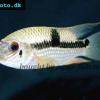 Acara
Acara  Yellow
Yellow  Patrick's
Patrick's  Blue
Blue  Green
Green 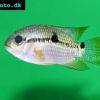 Acara
Acara  White
White  Compressed
Compressed 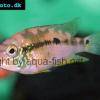 Pastel
Pastel  Midas
Midas  Red
Red  Bluemouth
Bluemouth  False
False 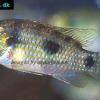 African
African  Agassiz's
Agassiz's  Banded
Banded 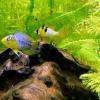 Yellow
Yellow  Cockatoo
Cockatoo  Blue
Blue  Blackstripe
Blackstripe  Highfin
Highfin  Redstripe
Redstripe  Threadfinned
Threadfinned  Macmaster’s
Macmaster’s 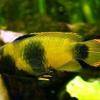 Panda
Panda  Norbert’s
Norbert’s 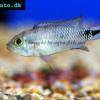 Blue
Blue  Thin-line
Thin-line  Three-striped
Three-striped  Viejita
Viejita 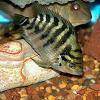 Flier
Flier  Archocentrus
Archocentrus  Convict
Convict  Seven
Seven  Spiny
Spiny  Oscar
Oscar  Chitande
Chitande  Firebird
Firebird  Midnight
Midnight  Lake
Lake  Sunshine
Sunshine  Aulonocara
Aulonocara  Nyasa
Nyasa 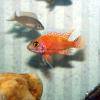 Ruby
Ruby  Grants
Grants  Aulonocranus
Aulonocranus  Chameleon
Chameleon  Benitochromis
Benitochromis  Orinoco
Orinoco  Yellow
Yellow 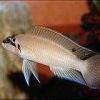 Brichard’s
Brichard’s  Guenther’s
Guenther’s  Southern
Southern  Cichla
Cichla 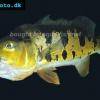 Peacock
Peacock  Chiseltooth
Chiseltooth  Bolivian
Bolivian  Red
Red  Many-pointed
Many-pointed  Jack
Jack  Red
Red  Three
Three 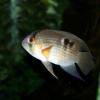 Keyhole
Keyhole  Azureus
Azureus  Red
Red  Jackson’s
Jackson’s  Crenicichla
Crenicichla  Honduran
Honduran  Blue-eye
Blue-eye  Afra
Afra 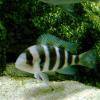 Frontosa
Frontosa  Slender
Slender  Malawi
Malawi  Chequerboard
Chequerboard  Checkerboard
Checkerboard  Malawi
Malawi  Ectodus
Ectodus  Tanganyika
Tanganyika  Canara
Canara  Green
Green  Rostratus
Rostratus  Pearl
Pearl 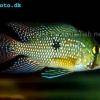 Geophagus
Geophagus  Yellowhump
Yellowhump  Suriname
Suriname  Redhump
Redhump  Red
Red  Dority’s
Dority’s  Argentine
Argentine 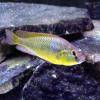 Burton’s
Burton’s  Victoria
Victoria 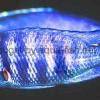 Haplochromis
Haplochromis  Jewel
Jewel  Banded
Banded 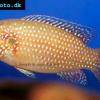 Lifalili
Lifalili  Lowland
Lowland  Texas
Texas  Pantano
Pantano  Severum
Severum  Banded
Banded 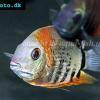 Severum
Severum  Rainbow
Rainbow  Parrot
Parrot  Chocolate
Chocolate  Brown
Brown  Marlieri
Marlieri  Golden
Golden  Striped
Striped  Masked
Masked 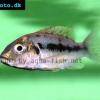 Konye
Konye  Blue
Blue  Trewavas
Trewavas  Electric
Electric  Dwarf
Dwarf  Redbreast
Redbreast  Lamprologus
Lamprologus  Gold
Gold 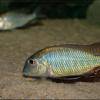 Greenface
Greenface 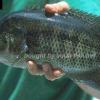 Mayan
Mayan  Aurora
Aurora  Blue
Blue  William’s
William’s 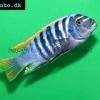 Zebra
Zebra  Malawi
Malawi  Blue
Blue 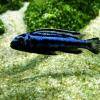 Blue
Blue  Mbuna
Mbuna  Parallel
Parallel  Purple
Purple  Flag
Flag  Bolivian
Bolivian  Ram
Ram  Basket
Basket 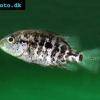 Haitian
Haitian  Zebra
Zebra  Striped
Striped  Neolamprologus
Neolamprologus  Brevis
Brevis  Fairy
Fairy 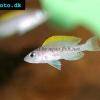 Neolamprologus
Neolamprologus  Cylindricus
Cylindricus  Hecq’s
Hecq’s  Neolamprologus
Neolamprologus  Lemon
Lemon  Mustax
Mustax  Daffodil
Daffodil  Six-bar
Six-bar  Five-bar
Five-bar  Marbled
Marbled 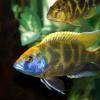 Giraffe
Giraffe  Blue
Blue  Sulphurhead
Sulphurhead  Wolf
Wolf  Jaguar
Jaguar  Blue
Blue  Marakeli
Marakeli  Madagascar
Madagascar  Pinstripe
Pinstripe  Pelmatochromis
Pelmatochromis  Kribensis
Kribensis 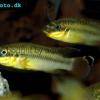 Striped
Striped  Red
Red  Deepwater
Deepwater  Fenestratus
Fenestratus  Nichols’
Nichols’  Southern
Southern  Bumble
Bumble  Demason’s
Demason’s  Slender
Slender  Red
Red  Mbuna
Mbuna  Malawi
Malawi  Kenyi
Kenyi  Powder
Powder  Altum
Altum  Angelfish
Angelfish  Angelfish
Angelfish 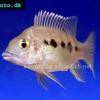 East
East  Juba
Juba  Earth
Earth 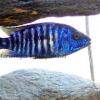 Electric
Electric  Azure
Azure 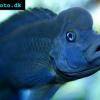 Lionhead
Lionhead  Discus
Discus  Blue
Blue  Red
Red  Zebra
Zebra  Brichard’s
Brichard’s  Blue
Blue  Firemouth
Firemouth  Zebra
Zebra  Yellow
Yellow  Blue
Blue  Dwarf
Dwarf  Blunthead
Blunthead 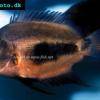 The
The  White
White  Twoband
Twoband  Fenestratus
Fenestratus  Window
Window  Tailbar
Tailbar  Black
Black  Redhead
Redhead 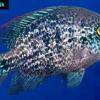 Oaxaca
Oaxaca  Xenotilapia
Xenotilapia